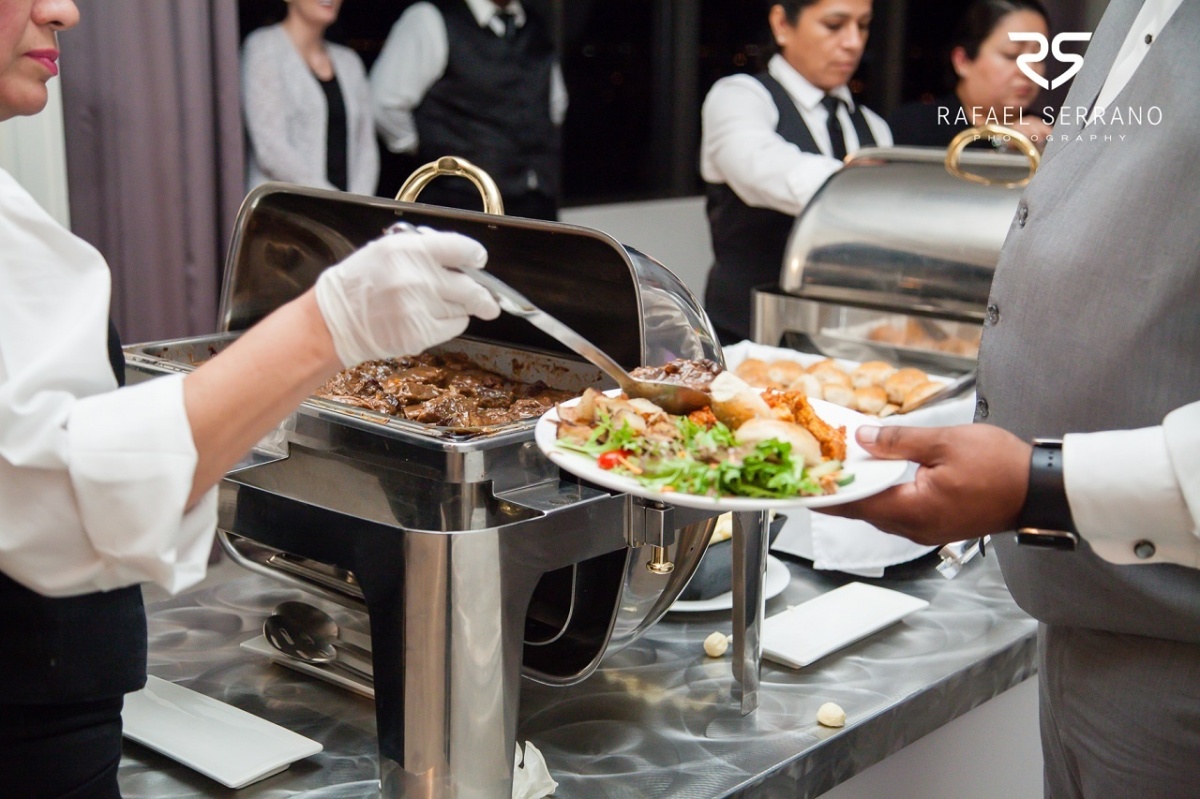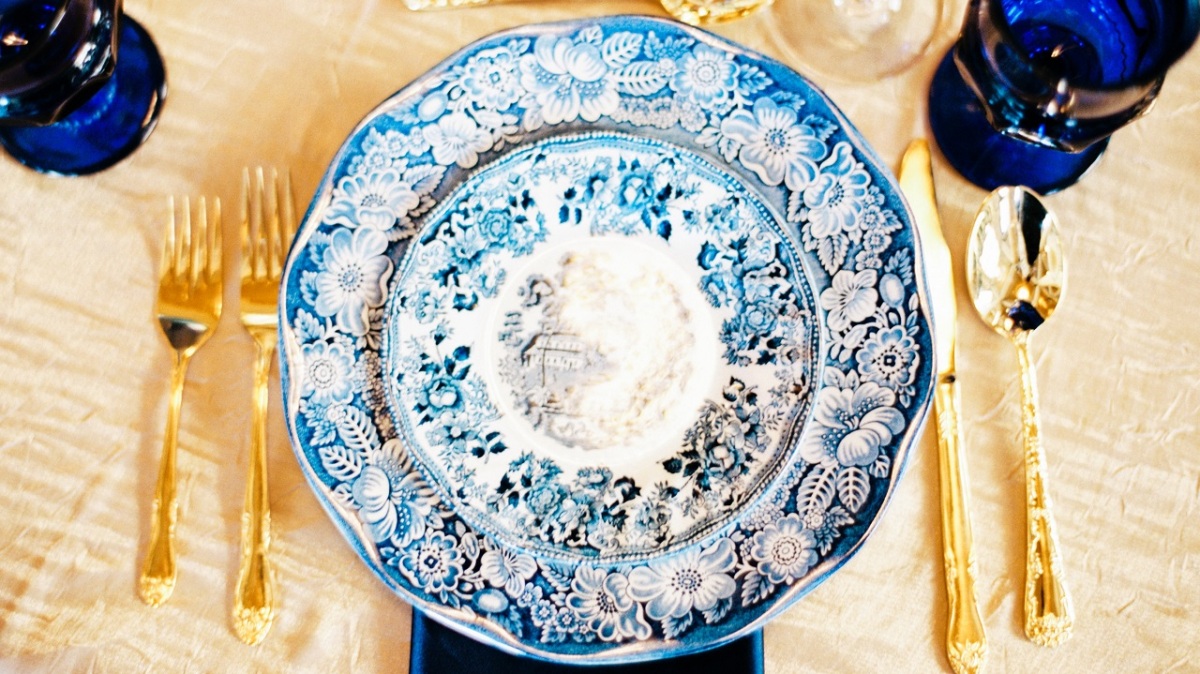It is the most commonly asked question – what DOES the service charge include? It doesn’t always mean servers, which we know can be confusing. Most catering companies (and venues) have a lot of odds and ends that cost them money to make your event happen, and in turn, will apply a percentage to your event in order to cover those costs. In lieu of sending you a 4-page breakdown of every single item they are charging you for, the end result is the service charge line on your invoice. Typically this percentage ranges between 18–20% for offsite catering, and 21–23% for exclusive catering at a venue.
Your service charge includes the following:
- Serving Items
This includes things like chafers to keep the food hot, large salad platters, bowls for dressings, large serving spoons and other items at the buffet line. Some caterers will also bring stands to elevate displayed food – not only does it look cool, but it is actually practical in making the most of the table’s space. Passed hors d’oeuvres need something to be set on when they are moving around, such as platters and trays. All of these extra items can really add up, so instead of listing every single spoon, tray, and pan, they are included under the umbrella of the service charge. - Large Equipment & Delivery Vehicles
When your food is prepped at the catering kitchen it still has to travel to you and most times your event isn’t around the corner. Large warmers/ovens and refrigerated trucks keep your food at the appropriate temperature so it tastes just as fresh as it did the second it came out of the oven. This equipment requires purchasing and maintenance, just like your daily driver, our trucks need gas and routine oil changes/maintenance. The service charge contributes to these costs, ensuring your caterer is able to afford to properly execute your event. No one wants to eat a wilted salad or ice cold chicken parmesan! - Behind the Scenes Staff
Before your event, operations staff prep and load the trucks with all the rentals and equipment needed to execute your event. They are loading dishes that were cleaned by dishwashers and food prepped by prep cooks. It takes 6–8 hours of pre-production before your caterer even arrives at your event. Before you, your family or your wedding planner see the caterer set foot at your venue, there have been at least 10 people already involved in the making of your event that day. Once the event is over, staff unloads the equipment, sends the dishes, silverware, and glassware to the dishwasher area and it starts all over again the next day. These staff members receive a wage just like any other job and the service charge contributes towards these pre and post event production costs. - Event Staff – MAYBE
This one depends on the caterer and venue. Most offsite caterers will have a separate line item for labor, and this is partly due to the fluctuation in venue layout, dinner style etc. The floor plan/number of floors at the venue, number of event hours, travel time, style of dinner, rentals, and other extras like wine service influence the off-site labor calculation. In this scenario, they charge on the lower end for service charge. When a venue has an in-house caterer, they may only charge for EXTRA staff, such as security guards, or additional chefs, bartenders or servers if the event’s menu or special services require it. A lot of venues include a certain time frame for your event time with your rental (ie: 4 hours of the event included in rental, $250 per additional hour). This helps them balance the costs of staff with the service charge alone and they don’t need to charge anything more than the 21- 23% service charge. When they are the exclusive caterer, they are able to store things at the venue as well, which eliminates the back and forth transport of many items that your offsite caterer has to bring every time.
So there you have it, the mysterious service charge line in your quote or invoice explained. Every caterer may do things slightly different so it never hurts to ask them about all they include in their catering quote. No matter what the case, there is A LOT that goes on behind the scenes of your event. We understand you don’t do this every day, and we expect questions so don’t be afraid to ask!

